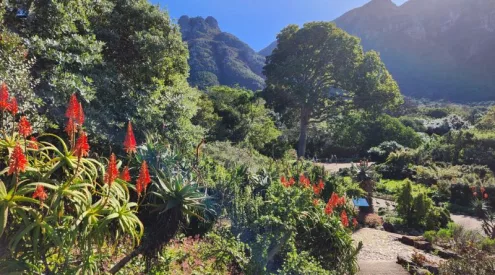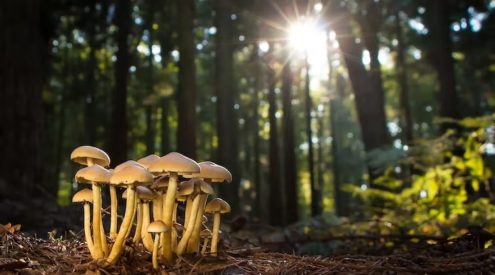If you’d like to become a fossil, there are a few important prerequisites to think about.
- Ensure there are no scavengers; they tend to gnaw things and break bones.
- Get buried fast and not in a coffin – too much air causes rapid decomposition and disintegration. The natural way would be to get caught in a flood, under a thick layer of volcanic ash, or in quicksand.
- Make sure it happens near the sea, a riverbank or a lake so that pretty soon, if not immediately, you’re at least a metre underground and in the water table.
- Expect to be a fine, fully mineralised fossil skeleton in about a million years. Hopefully, if you’re found, there will still be creatures around interested in old bones.
Palaeontologist Roger Smith listed the conditions on his fingers over coffee in Iziko South African Museum’s deli as schoolchildren racketed down the stairs, starry eyed from a visit to the Cape Town institution’s fossil displays.
‘Of course, by then there won’t be anything left of you,’ he added. ‘The calcium carbonate will have leached out of your bones to be replaced by silica which is flushed into the holes the calcium left. That’s why you need to be in a wet underground space, preferably deep enough for the weight of what’s above you to eventually squeeze out the water and turn you into rock. It’s a very rare process for bones to pass from life to rock.’
The possibility of becoming a fossil, by present standards, is around one in five million unless you’re in an upland area, in which case you have a snowball’s chance in hell.
In the Karoo, Roger’s special stomping ground, he might find a 250-million-year-old fossil faster than you could locate a modern animal skeleton. His reasoning is simple:
‘You’d be dealing with a single landscape. I’d be looking into hundreds of them, layer upon layer, spanning millions of years.’
So to be found, you’d need a guy like Roger. But to re-emerge from the rock, you’d want to be in the delicate hands of someone like Zaituna Erasmus, one of Roger’s preparators.
‘This is an Endothiodon,’ she said, pointing at a rock with bumps and streaks of pale yellow. ‘I’ve been working on it for about a month. Should take another two to finish. Then I’ve got a Lystrosaurus.’
Zaituna isn’t a palaeontologist, but has qualities that make her a skilled fossil preparator: good hand-eye coordination, patience and a passion to see what emerges under her buzzing air chisel.
‘Some rock is easy, some is hard, but every specimen is a wow. And being in the field with Roger just blows you away. He knows so much and he shares his knowledge.’
‘They’re a special kind of people,’ said Roger of his preparators. ‘They get hooked on revealing the creature in the rock. But the liabilities are high. These specimens, especially if they’re the only one of their kind (called type specimens), are studied by scientists from all over the world. Any minute damage to the surface would be instantly noticed.’
It’s unusual work, and a bit like art restoration. Fossil preparators work under high magnification and their greatest disaster would be to damage a fossil. The bone surface is vitally important as it shows where muscles were attached, where tooth scratches occurred or even the texture of skin or feathers. The interface between rock and fossil can be sharp or blurred, but never more than about half a millimetre. Uncovering a single specimen can take one person working continuously up to two years.
Our coffee cups were cold and Roger had work to do, but I had a final question. From a palaeontologist’s perspective, how were humans doing?
‘Rather badly,’ he said. ‘We’re an invasive species and there’s no record of that being a positive thing. We’re not living sustainably. But ecosystems have feedbacks and the long view tells us that the planet will adjust back to sustainability, with or without us.
‘We’re a temperate climate species which evolved in the Great Rift Valley area and that’s where we should be. But we live everywhere and there are seven billion of us.
‘Urban situations are so fragile and dangerous. Perfect for the spreading of a virus we can’t cure. And what happens when the power runs out, oil depletes, energy systems run down, electricity generation has to be cut back, the internet goes down globally? We’ll survive as a species – we’re very smart and resourceful – but not in great numbers.’
On the way out I was stopped by Carcharodontosaurus, a creature with a long name and teeth the size of bananas which had obviously fulfilled all the prerequisites for fossilhood. After 100 million years it still had the power to make me shudder. Such is the wonder of palaeontological exploration and its patient preparators.
Illustration by James Berrange.
















